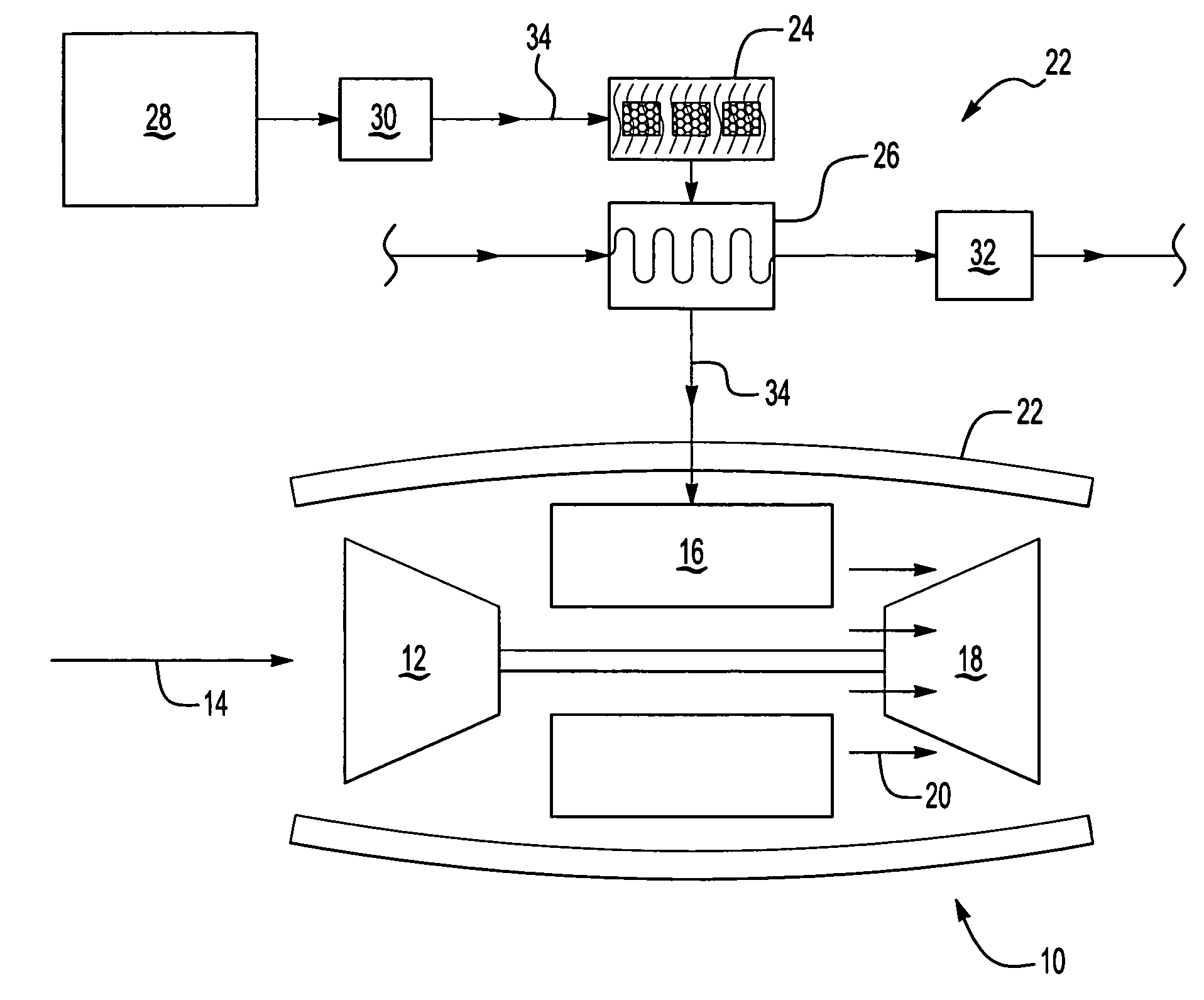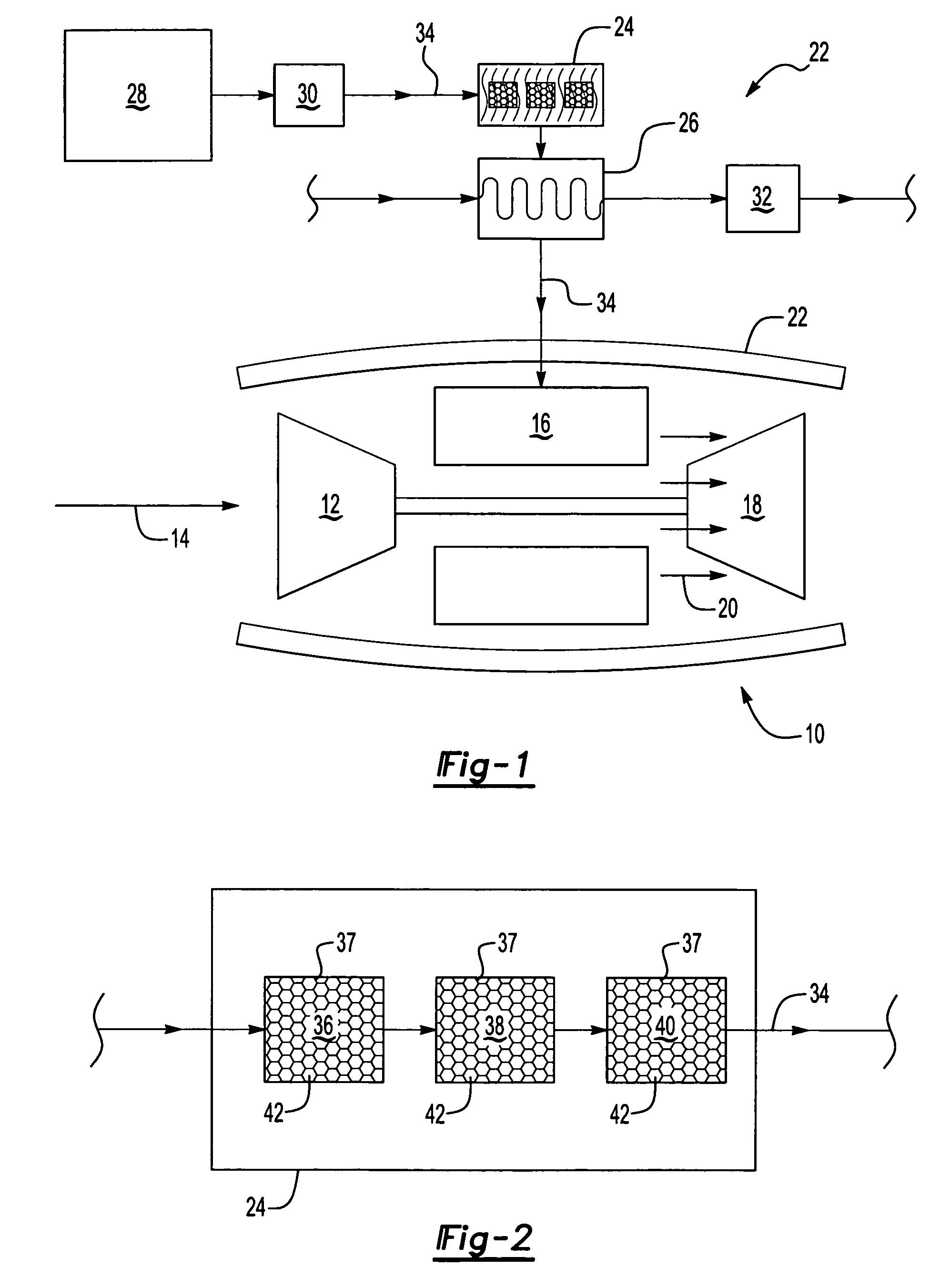Catalytic treatment of fuel to impart coking resistance
a technology of catalytic treatment and fuel, which is applied in the direction of combustion air/fuel air treatment, single unit paving, fuselage bulkheads, etc., can solve the problems of limited usable cooling capacity of a particular fuel, limited space aboard an aircraft, and large size of the fuel deoxygenator that increases disproportionally with the requirements, so as to increase the usable cooling capacity of the fuel
- Summary
- Abstract
- Description
- Claims
- Application Information
AI Technical Summary
Benefits of technology
Problems solved by technology
Method used
Image
Examples
Embodiment Construction
[0014]Referring to FIG. 1, a gas turbine engine assembly 10 includes a compressor 12 a combustor 16 and a turbine 18. Airflow 14 entering the compressor 12 is compressed to a high pressure and directed towards the combustor 16. In the combustor 16, fuel is mixed with the high-pressure air and ignited. Resulting hot combustion gases 20 drive the turbine 18. Fuel is delivered to the combustor through a fuel delivery system 22. Although a gas turbine engine assembly is shown, a worker with the benefit of this disclosure would understand the application to any energy conversion device.
[0015]Fuels have long been used as coolants on aircraft because of the capacity to absorb sensible and latent heat. Sensible heat is the heat required to heat the fuel to a boiling point. Latent heat is the heat required to vaporize the fuel. The capacity to absorb sensible and latent heat is known as the fuels physical heat sink. The physical heat sink is limited by formation of insoluble materials formed...
PUM
| Property | Measurement | Unit |
|---|---|---|
| temperatures | aaaaa | aaaaa |
| temperature | aaaaa | aaaaa |
| temperature | aaaaa | aaaaa |
Abstract
Description
Claims
Application Information
 Login to View More
Login to View More - R&D
- Intellectual Property
- Life Sciences
- Materials
- Tech Scout
- Unparalleled Data Quality
- Higher Quality Content
- 60% Fewer Hallucinations
Browse by: Latest US Patents, China's latest patents, Technical Efficacy Thesaurus, Application Domain, Technology Topic, Popular Technical Reports.
© 2025 PatSnap. All rights reserved.Legal|Privacy policy|Modern Slavery Act Transparency Statement|Sitemap|About US| Contact US: help@patsnap.com


